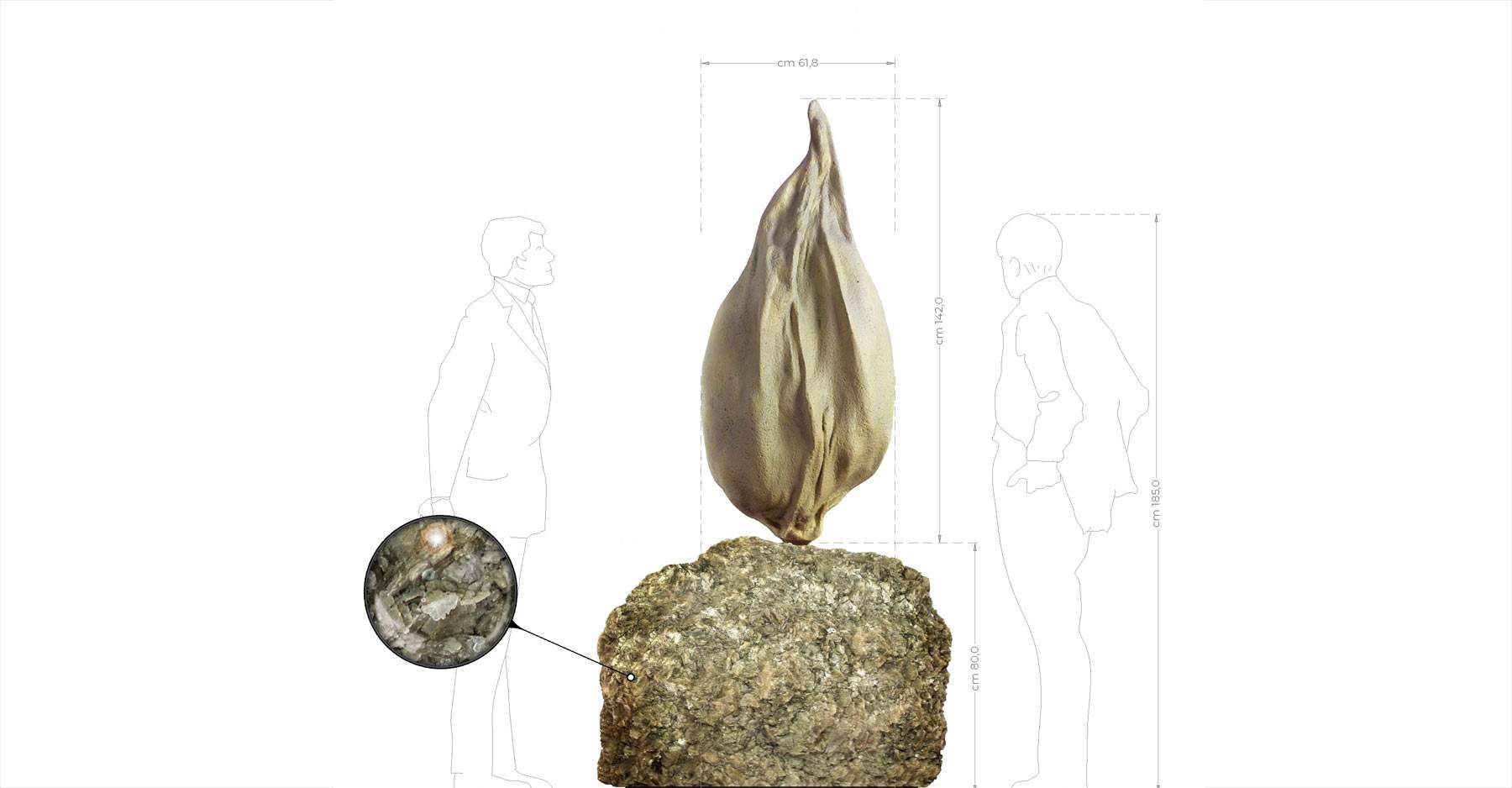The Seme d’arancia su terra di Sicilia by Emilio Isgrò (Barcellona Pozzo di Gotto, Messina, Italy, 1937), recently acquired to the collection of the Fondazione di Sicilia, will be presented on April 9 at Palazzo Branciforte. The appointment is part of the project Isgrò Dante Caravaggio and Sicily, promoted by Fondazione Sicilia on the occasion of its 30th anniversary, with Amici dei Musei Siciliani, in collaboration with Archivio Emilio Isgrò and the participation of Fondazione per l’Arte e la Cultura Lauro Chiazzese.
Prior to the presentation of the work, that of the catalog Isgrò Dante Caravaggio and Sicily, published by Skira Editore with all the materials, a testimony of the artist, reproductions of the works on display at Villa Zito, and texts by the curators and leading scholars commenting on the different aspects of Isgrò’s art covered, is scheduled. The Seme d’arancia (Orange Seed), among Isgrò’s best-known sculptures, was created in 1998 as a large public sculpture for his hometown of Barcellona Pozzo di Gotto, Sicily. a great metaphor for Sicilian culture and its possibility of rebirth, it harks back to the sunny and enveloping cultures of the Mediterranean, which developed as much through speech as through exchange, giving rise to values of civil coexistence and welcome. The one in Barcelona is now referred to as “protoseed” because others, of various forms and materials, were later derived. The latest one, Seme d’arancia su terra di Sicilia (Orange Seed on Sicilian soil ), which will be installed at Palazzo Branciforte, seems almost to reconnect a thread that returns in this way to the artist’s native island, origins that in any case have never been lost in Isgrò’s artistic development and that return more or less explicitly in many of his works.
The installation project curated by the Lapis Association places the work, cast in bronze, on a “land” typical of Sicily identifiable with the whole island and its territory, selenite, a macrocrystalline gypsum rock. The white, glassy effect of its many facets make it an aesthetically appreciable material from its visible outcroppings on the natural terrain. Its geological origin dates back a little less than six million years, when evaporation of water from the ancient Mediterranean Sea produced the macrocrystals that the Romans later called lapis specularis. In the past, the Orange Seed has repeatedly been featured in cultural news.
The Barcelona sculpture made of resin tuff and volcanic sands of monumental dimensions, returned to the news in 2014 when the work, tested by years of exposure to the elements, was restored to give rise to a broader initiative designed to actively involve citizens and schools in a collective participatory form. In 2015 to welcome visitors to Expo in Milan stands the Seme dell’Altissimo: an imposing orange seed, enlarged one billion five hundred million times, seven meters high and made of white marble from Mount Altissimo, quarried directly from the quarries of the Apuan Alps. The sculpture was later donated to the city of Milan and today we find it permanently placed in the garden in front of the Triennale building. Isgrò’s seeds were also planted in 2017 in Catania, in the garden of Fondazione RadicePura, at the foot of Mount Etna, as if spitting directly from the volcano in the installation The Dream of Empedocles. An enlarged lemon seed can be seen at the Fondazione Vittoriale degli Italiani, in Gardone Riviera, in the province of Brescia, with the 2016 work Aligi.
"Isgrò conceives aeuròpera,“ the catalog says, ”a true offering to citizenship that from Sicilian becomes Italian and, of course, European. What element can gather in itself the Mediterranean, Sicilian and European soul if not a seed, a universal emblem of birth or rebirth in power? Thus, in that very land, recognized as the cradle of European civilization, Sicily, stands a monument to the life and fruitfulness of man and nature."
 |
| Palermo, at Palazzo Branciforte the Seme d'arancia on Terre di Sicilia by Emilio Isgrò |
Warning: the translation into English of the original Italian article was created using automatic tools. We undertake to review all articles, but we do not guarantee the total absence of inaccuracies in the translation due to the program. You can find the original by clicking on the ITA button. If you find any mistake,please contact us.